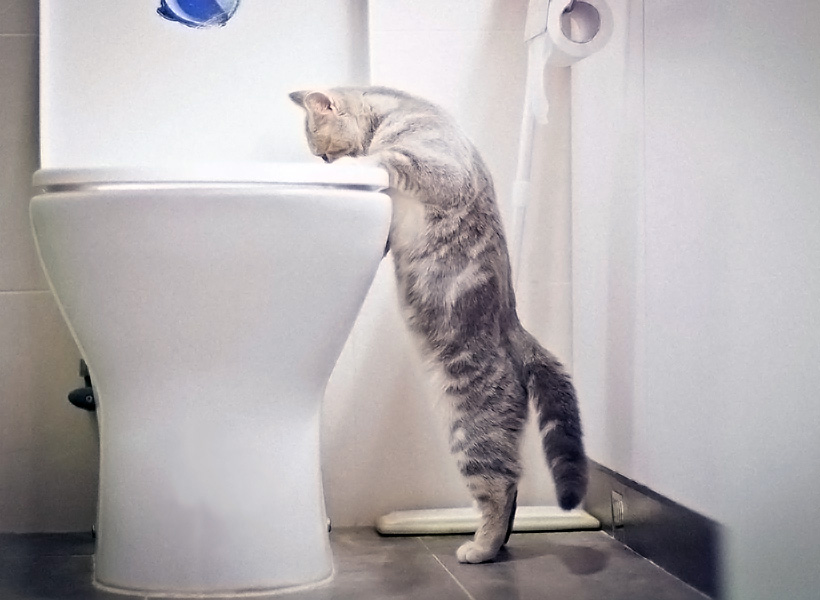Dangers of Flushing Cat Poop Down Your Toilet - Avoid Potential Problems
Dangers of Flushing Cat Poop Down Your Toilet - Avoid Potential Problems
Blog Article
Are you on the lookout for tips on How to Dispose of Cat Poop and Litter Without Plastic Bags?

Intro
As cat owners, it's vital to bear in mind how we deal with our feline buddies' waste. While it might seem hassle-free to flush feline poop down the commode, this method can have detrimental repercussions for both the setting and human health.
Alternatives to Flushing
Luckily, there are safer and much more accountable ways to take care of feline poop. Take into consideration the following alternatives:
1. Scoop and Dispose in Trash
One of the most typical technique of disposing of pet cat poop is to scoop it right into a biodegradable bag and toss it in the trash. Make sure to utilize a devoted litter inside story and take care of the waste quickly.
2. Usage Biodegradable Litter
Go with biodegradable cat clutter made from products such as corn or wheat. These trashes are eco-friendly and can be safely disposed of in the trash.
3. Bury in the Yard
If you have a backyard, consider burying pet cat waste in a marked area away from veggie yards and water resources. Be sure to dig deep enough to stop contamination of groundwater.
4. Mount a Pet Waste Disposal System
Buy a pet waste disposal system especially developed for feline waste. These systems use enzymes to break down the waste, lowering smell and ecological influence.
Health and wellness Risks
In addition to environmental problems, flushing feline waste can likewise pose health threats to people. Cat feces might have Toxoplasma gondii, a parasite that can trigger toxoplasmosis-- a potentially serious illness, specifically for pregnant ladies and people with weakened immune systems.
Ecological Impact
Purging cat poop presents damaging virus and parasites into the water system, posturing a substantial risk to aquatic communities. These pollutants can negatively affect marine life and compromise water quality.
Conclusion
Liable pet dog possession expands beyond offering food and shelter-- it additionally includes proper waste management. By avoiding flushing pet cat poop down the commode and selecting alternate disposal techniques, we can decrease our ecological footprint and shield human wellness.
Why Can’t I Flush Cat Poop?
It Spreads a Parasite
Cats are frequently infected with a parasite called toxoplasma gondii. The parasite causes an infection called toxoplasmosis. It is usually harmless to cats. The parasite only uses cat poop as a host for its eggs. Otherwise, the cat’s immune system usually keeps the infection at low enough levels to maintain its own health. But it does not stop the develop of eggs. These eggs are tiny and surprisingly tough. They may survive for a year before they begin to grow. But that’s the problem.
Our wastewater system is not designed to deal with toxoplasmosis eggs. Instead, most eggs will flush from your toilet into sewers and wastewater management plants. After the sewage is treated for many other harmful things in it, it is typically released into local rivers, lakes, or oceans. Here, the toxoplasmosis eggs can find new hosts, including starfish, crabs, otters, and many other wildlife. For many, this is a significant risk to their health. Toxoplasmosis can also end up infecting water sources that are important for agriculture, which means our deer, pigs, and sheep can get infected too.
Is There Risk to Humans?
There can be a risk to human life from flushing cat poop down the toilet. If you do so, the parasites from your cat’s poop can end up in shellfish, game animals, or livestock. If this meat is then served raw or undercooked, the people who eat it can get sick.
In fact, according to the CDC, 40 million people in the United States are infected with toxoplasma gondii. They get it from exposure to infected seafood, or from some kind of cat poop contamination, like drinking from a stream that is contaminated or touching anything that has come into contact with cat poop. That includes just cleaning a cat litter box.
Most people who get infected with these parasites will not develop any symptoms. However, for pregnant women or for those with compromised immune systems, the parasite can cause severe health problems.
How to Handle Cat Poop
The best way to handle cat poop is actually to clean the box more often. The eggs that the parasite sheds will not become active until one to five days after the cat poops. That means that if you clean daily, you’re much less likely to come into direct contact with infectious eggs.
That said, always dispose of cat poop in the garbage and not down the toilet. Wash your hands before and after you clean the litter box, and bring the bag of poop right outside to your garbage bins.
https://trenchlesssolutionsusa.com/why-cant-i-flush-cat-poop/

Do you really like more info about Can You Flush Cat Poop Down The Toilet?? Put a remark down the page. We will be glad to listen to your views about this blog. We are looking forward that you visit us again in the future. Those who enjoyed our blog post kindly remember to pass it around. We value reading our article about Don’t flush cat feces down the toilet.
Click Here Report this page